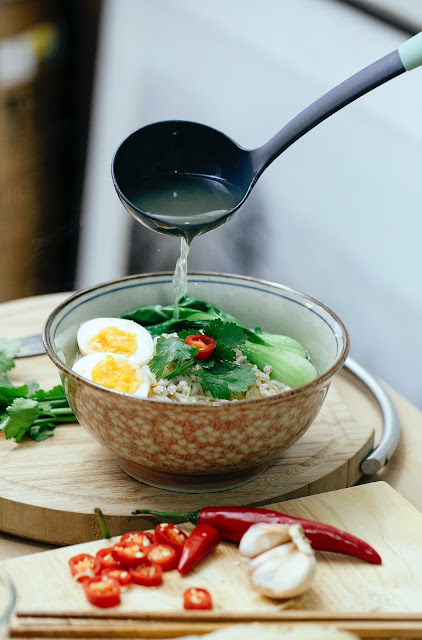Making truly succulent sautéed vegetables is not hard, but you do have to suppose a bit. ( I know, I detest it too!)
Braised vegetables are a putatively simple act. Cut them up, put them in a hot visage, move ‘em around until they’re “ done. ” But there's a lot of variation from vegetable to vegetable in terms of viscosity, water content, and bounce content, just to name a many factors. Making truly succulent sautéed vegetables isn’t hard, but you do have to suppose a bit. ( I know, I detest it too!)Sot them completely
Whether you’re cooking up a visage of mushrooms or a bouquet of broccoli, barring redundant water from the cuisine process ensures you’re actually sautéing, not storming. Water prevents your food from making good contact with the hot visage, which means lower browning, which means lower flavor. You can spot your veggies with paper napkins, but I like to use a salad incentive to fling every last drop of water out and down.
Cut them slightly
A 1/ 2- inch knob of carrot will cook faster than a 1- inch knob of carrot. That’s just drugs. Slicing and/ or mincing your factory corridor to analogous, if not identical confines will insure they cook at the same rate, so you don’t end up with a pile of carrots that's agonized with both mushy and brickle pieces.
When adding different types of vegetables to the same visage, a good rule of thumb is to add them “ from the ground up, ” starting with root vegetables( like carrots) and effects that grow right on the ground( like squashes), and working your way up to the leaves and flowers that grow above ground( like cabbage or broccoli).
About those thick vegetables
At the threat of contradicting myself, occasionally it’s not enough to add the tough guys to the visage before the soft bois. thick root vegetables( like potatoes) and hearty squashes( like butternut) can profit from little par-cuisine ( partial cuisine) before they hit the visage, so you don’t end up with browned outsides and tough inwards.
Bathe your sweet potatoes for better flavor
Serious Eats set up that par-cuisine sweet potato in a hot, but not boiling water bath before riding redounded in yams that browned butter and tasted sweeter than those that were cooked from fresh. You can use this same move for sautéing
Bring three quarts of water to a pustule in a large pot. Add one quart of room-temperature water. This should bring your water down to around 175 °F( 79 °C). Add many pounds of sliced or minced potatoes to that water, and it’ll come down to well within the needful range. Pop a lid on the pot, keep it in a warm part of your kitchen and leave it there for a couple hours.
Once the sweet potatoes are done with their bath, you can rally or sauté as usual.
Extinguish your butternuts for easier shelling
Butternut squash is notoriously hard to peel and chop, but many twinkles in the microwave oven can soften them up. Cut three or four long gashes into each side of the whole squash( so brume can escape and your squash doesn’t explode), also extinguish it in the microwave oven for three- to five twinkles, until the skin softens. Let sit for a nanosecond or two, and also peel and bones like you typically would.
Boil white potatoes to give them better texture
Boiling potatoes for many twinkles cuts down on time spent in the visage while the interspersed water infuses them with flavor. You can par- chef a bunch of spuds all at formerly, and also fry them throughout the week as the pining strikes. Add 2 soupspoons of the kosher swab to 1 quart of water and bring to a pustule. Add up to 2 pounds of 1- inch cubed potatoes and cook for five twinkles. The drain is also spread out over clean kitchen napkins or paper napkins and lets the redundant humidity dematerialize for 10 twinkles. Sauté incontinently or store in the fridge until cuisine time.
Stop crowding the damn visage
Every single stock print of “ sautéed vegetables ” shows a visage that's far too full of vegetables to get any real sautéing done. Those vegetables are fumed, ma, and fumed vegetables are nowhere near as scrumptious as their sautéed counterparts.
Adding too important cold food will drop the temp of your visage, and a cold visage can not sear. You want to use a visage that’s big enough to let everyone hang out in a single subcaste without touching or lapping, so they get as important contact with the visage as possible, and the water has room to dematerialize snappily.
Make sure your visage is hot Sautéing is a high-heat cuisine system, so you want your visage to be sizzling. You want your oil painting to shimmer, your adulation to froth. ( exclude the fat for mushrooms, however. Mushrooms play by their own rules.) A good way to test this is to flutter some water in here. However, you’re ready, If the water sizzles and evaporates incontinently. ( You do not, still, want the visage so briskly that the water rolls into a little ball and balls around the visage. Save that for steaks and chops.)
Stop fucking with it so much Sautéing is an action, yet some people are a little too active. repel the appetite to constantly stir and scoot and let your vegetables remain in contact with the visage long enough to develop some color. Color is flavor, musketeers — let it be.




Comments
Post a Comment